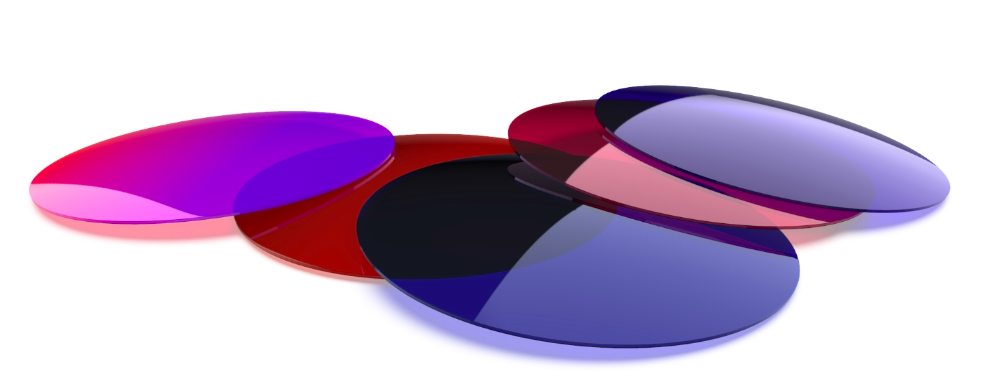Jonathan Jaglom, a high-profile executive in the 3D printing world, began his career at Objet and climbed the ranks through senior roles at Stratasys before eventually leading Makerbot. Tied to the same investor group that originally backed Objet, Jaglom is now steering a new venture: flō. This Israeli startup is zeroing in on a unique niche within the optics industry. While companies like King Children and Materialise have aimed to disrupt frame manufacturing, and Meta’s acquisition of Luxexcel has focused on creating optically clear lenses, flō is carving out its own path by specializing in lens coatings.
The company intends to deploy inkjet-based 3D printing technique to apply unique, multi-material, multi-layer coatings to lenses. This innovative approach jets material at a voxel level, allowing for exceptional precision. Material is strategically placed only where needed, enabling the creation of lenses with unique functionalities, specifically tailored for particular uses.
Beyond making lenses more functional, flō aims to offer the ophthalmic and eyewear sectors an easier, more efficient process, helping businesses to distinguish themselves in the marketplace. Imagine lenses with special coatings designed for wakeboarders to improve vision on water, or for pilots to better distinguish contrasts in the sky. This kind of innovation could spawn new models and functionalities, inspiring fresh reasons for consumers—whether athletes, casual wearers, or professionals—to purchase eyewear.
From an economic standpoint, the opportunity is significant. The ophthalmic coating market alone is estimated to be worth around $15 billion and encompasses not just eyewear but also coatings for solar panels and consumer electronics. A flexible digital process like flō’s could, therefore, have enormous economic implications. In the eyewear sector, unsold inventory remains a perennial issue. Thus, a more adaptable, on-demand production method would be a game-changer. Additionally, the potential for upselling existing customers with specialized versions—like a coating optimized for nighttime driving—indicates that differentiation is of special interest in this market. Compared to current analog “dipping” processes, costs could be saved, while manufacturing is made more efficient and environmentally friendly.
¨flō’s platform equips ophthalmic labs with one holistic system that enables them to easily introduce a variety of coating solutions. Our vision is to provide a flexible, ever-evolving, unified platform so that customers can generate whatever coatings needed. Costs are cut down by minimizing inventory expenses, equipment costs, waste, and the need for labor-intensive coating requirements,” Jaglom told 3DPrint.com.
“Given that flō uses a digital approach in its coating process, outcomes are more predictable and human error is greatly reduced allowing for high quality coatings to be consistently generated from the flō platform. Some coatings, such as photochromic coatings, cannot be done at the lab-level and need to be ordered from the lens manufacturer,” Jaglom added. “This creates additional cost for ophthalmic labs. flō’s platform allows for multiple coating solutions, providing flexibility, and eliminating the need for high fixed costs and labor. Our technology allows users to customize coatings in color, gradient or even in graphic design and we aim to offer true mass customization down to the individual.”
Jonathan was attracted to flō because it “solves real world problems using digital technology.” He believes that the firm can really disrupt the eyewear market. But what about end customers? Will this help them?
“Thanks to our digital technology using [AM], customers will have a range of options that they never came across before, and for less money. Tints can be done in whatever gradient desired and whatever color selected. Additionally, graphic arts can be applied,” Jaglom said.
Beyond eyewear, Jaglom sees flō as being uniquely focused on using “additive to position materials that have both optical clarity and functionality on non-flat surfaces.” In that way, he sees opportunities in consumer electronics, medical devices, automotive and defense.
I appreciate that flō isn’t just another “3D printing is cool” startup, nor is it an OEM relying solely on the growth of the additive manufacturing market. What excites me is that flō is tackling genuine issues in other industries. To me, additive technology is a means to an end, not the end itself. In this case, flō has the potential to dramatically transform the ophthalmic lab landscape by offering a technology that could yield real cost savings, improve time-to-market, and offer flexibility and new product lines. This kind of industry-specific focus could, if successful, significantly expand the reach of our market.
I’m of the belief that the future is much more about firms like flō, which aim to unlock the benefits of 3D printing for other markets, rather than just preaching to the choir with machines designed for those who are already converts to the technology. So you can bet I’ll be keeping a close eye on Jonathan and his endeavors.
